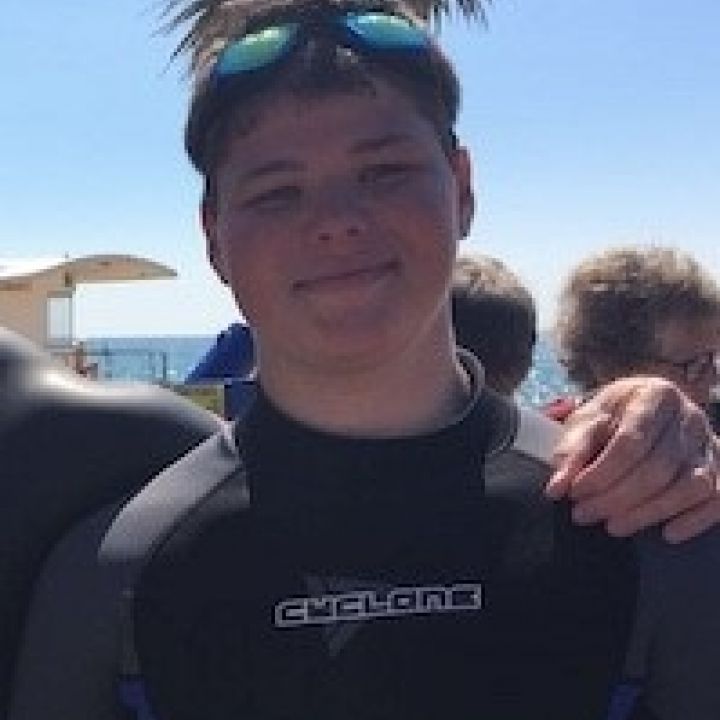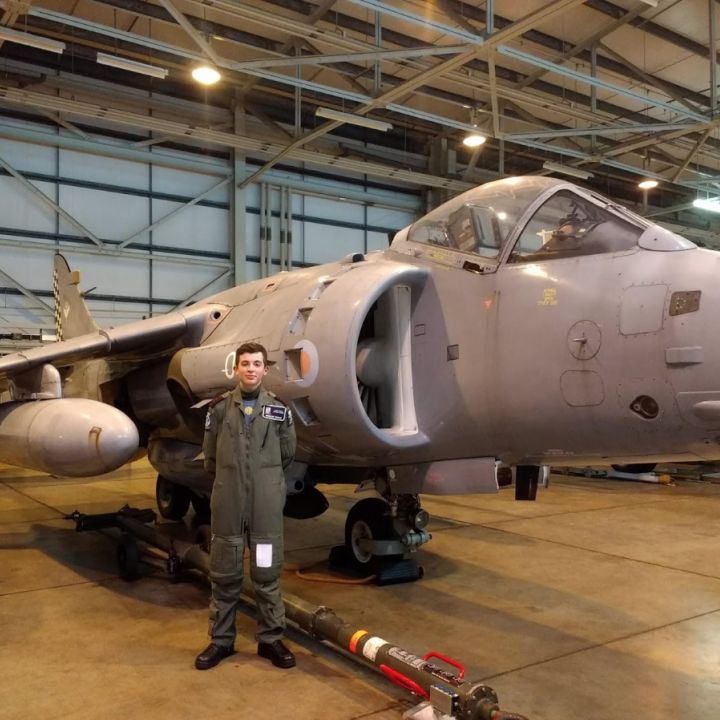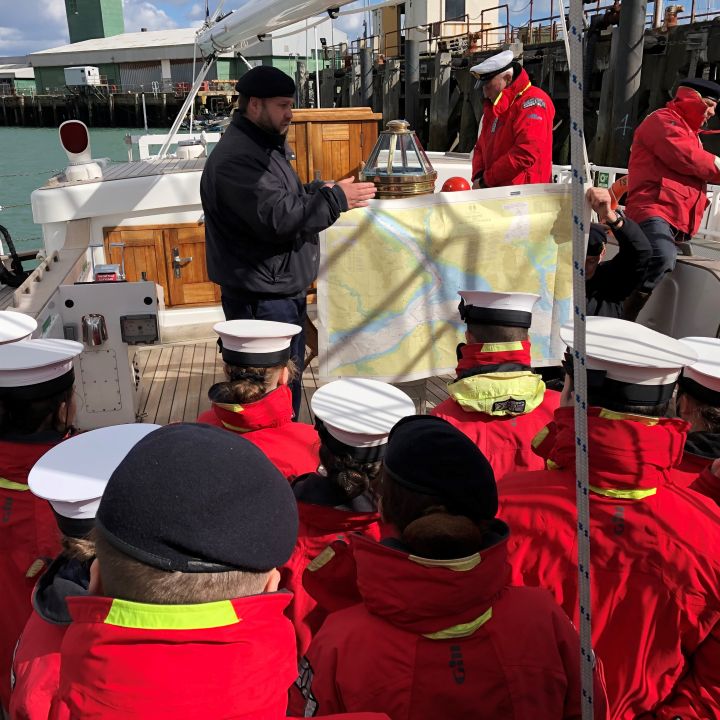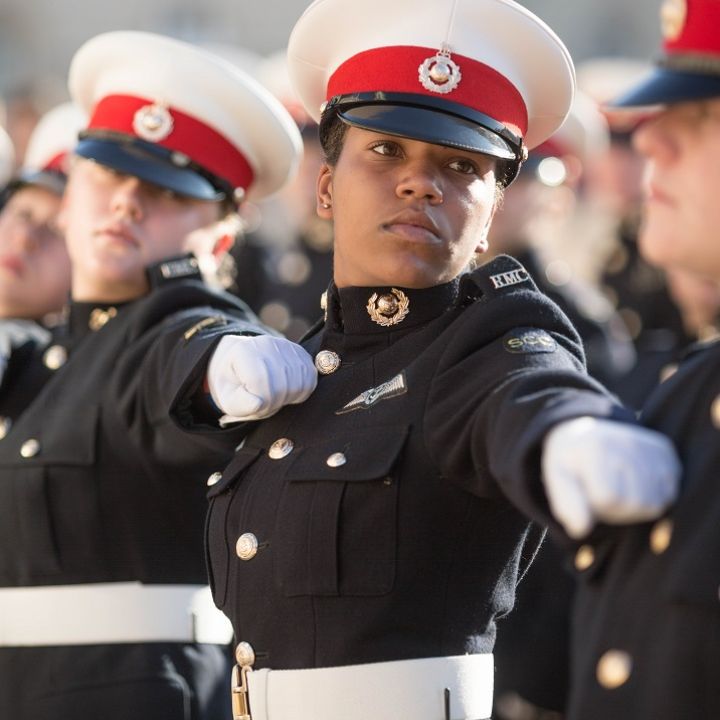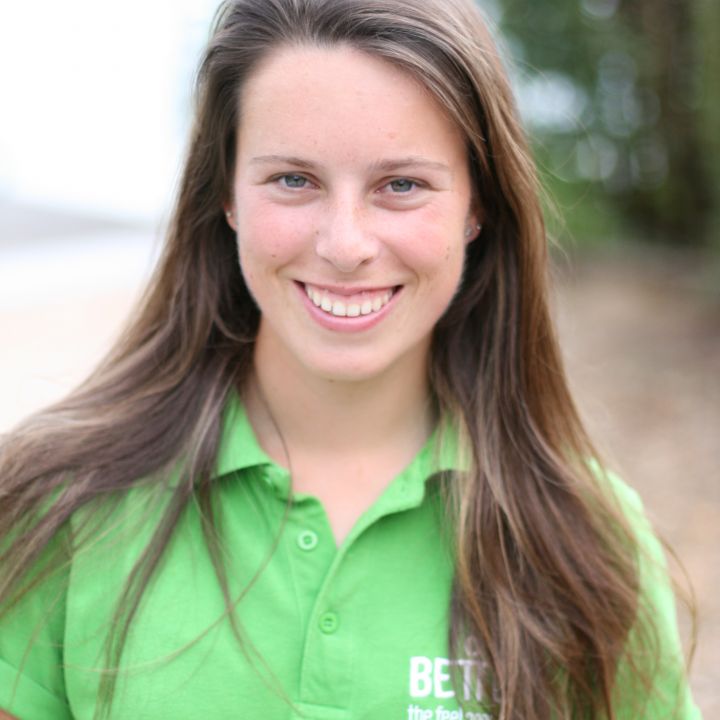In February, I was lucky enough to be awarded the Daedalus Trophy for achieving top student on the Cadet Naval Aviation Course (CNAC)!
Where the journey started
I discovered I’d been accepted on the course in mid-December. There was an email sent to me with a list of names, one of which was my own. I was given a kit list, travel instructions, and a list of pre-course work to be done by the time I’d left for Weymouth (where the Basic CNAC was going to take place). The topics that were Principles of Flight, Radiotelephony, Basic Aircraft Instruments, Meteorology, and airmanship.
The Course
We woke at 0600h in order to have breakfast at 0730h. Usually, we would start lectures at 0800h. Our first lecture was Navigation from 0800h to 1000h (most of our lectures were 2 hours long). If you have done the basic navigation specialisation then this part of the course should be fairly simple for you.
Our next lecture was Radiotelephony. This was probably the most difficult lecture of the entire course, not because it was a difficult subject but because the instructors had to talk exceptionally fast making it very difficult to take notes. Radiotelephony covered everything from Q-codes to callsigns as well as the Circuit.
Before dinner, we were asked to make a meteorology (MET) brief. We hadn’t been taught how to do that but I think that was part of the exercise. My flight’s MET brief was under-detailed, un-organised and disappointing, but it was our first and I don’t think the staff were expecting it to be any good, especially because we only had 15 minutes to prepare it.
Our last lecture of the day was the history of the fleet air arm (FAA). We were told about the FAA and all its major achievements and battles from when it was formed as the Royal Naval Air Service up until it’s newest aircraft carrier and her achievements. We finished that day at 2200h and were encouraged to do revision. We went to bed just after 2300h.
The next day was almost as difficult, we started the day with Airmanship and air law. We studied the different organisations linked with aviation in the UK and the EU as well as things like NOTAMs and airborne collision avoidance. We then studied the runway and all of its symbols and their definitions. After that, we had a lecture on the principles of flight.
On Tuesday, we spent a lot of the day on revision, however, we did study more MET and were told how to improve our MET briefs. We also studied the Radiotelephony transmitted in the circuit. We prepared our third MET brief but we wouldn’t be presenting it until the morning as a lot of the staff weren’t back from Yeovilton yet. For the first time that week, we got some free time to relax, although a lot of it was spent on personal revision!
On Wednesday, the first deal of the day was to do our group MET brief. I was more than nervous. We presented it, this time in an organised, structured fashion. We were given criticisms from most of the staff and the CO said nothing - I assumed no news meant good news. We were given lectures in the morning on human factors while flying, We were taught about Hypoxia, Aerotitis, and other difficulties of changes in pressure such as the bends. We were also taught about propulsion but only from the propeller. We then prepared our individual MET briefs for our exam in the afternoon. We were allowed to work on them together but we needed to present them individually.
Exams
There were four exams, MET, Radiotelephony in the circuit, Navigation and a written exam that covered all of the other topics we had learned. I will point out. However, not all of our assessment was on our exams, we were constantly assessed throughout the week on our knowledge and understanding, presentation and confidence, and most importantly our officer qualities.
Every exam was 1 hour. Our exams were done on flights, my first one was navigation. It went well, I plotted everything on the graph then filled out the route card and was finished and checked over with 15 minutes to spare. My second exam was my MET brief. It went better than I thought it would and I was told that I’d passed afterwards. I was pleased that I’d managed to improve my MET briefs since the second one. The next exam was Radiotelephony. A mock circuit was set up and we walked around it making various radio calls to the “tower” as we did so after which we were informed that we were the best group that had gone through it so far. Our last exam was a written exam.
Since we had no more studying to do, we got the evening off.
Flying
We got up at 0500h and left SCTC Weymouth at 0600h for RNAS Yeovilton. We got there in time for the 0800h MET brief from the staff there. We then went through training on how to exit the Grob Tutor in the event of an emergency. We were also weighed to see if we were heavy enough or too heavy to fly in the aircraft. I was only just heavy enough even after they’d added the weight of the 10kg parachute. We then had a quick tour of one of the hangars with the Commanding Officer of the base.
I had a quick bite to eat before going up and met my instructor, a civilian captain. I was given a parachute, sunglasses and gloves. I tried to make conversation with him but it was quite difficult to make out over the chatter from the tower and other aircraft around. We took off quickly and were above the clouds within a minute. He taught me the basic controls; pitching, yawing and banking. He then did a loop where we pulled about 3G. We then did another loop where I was following through and then I did one independently which I will admit was not as smooth as either of his. To finish the half hour off, We did a Cuban eight which, for anyone who doesn’t know, is a half loop followed by rolling onto your front and doing a dive, then another half loop followed by rolling back onto your front. We did two of those, I was told we’d pulled nearly 4G. Although it was good fun, it was like being in a washing machine. Unfortunately, the half hour I had in the aircraft was over.
Once I was back on the ground we had a tour of the FAA museum hangar. We were shown around the Swordfish Torpedo Bomber of the second world war, the Sea Fury, the Chipmunk training aircraft, the Sea Vixen, the Harrier jump jet and the F-4 Phantom. After that, we waited for everyone to finish their flights and went back to Weymouth.
Conclusion
We were given a quick individual brief telling us if we had passed and if we were through to the intermediate course, I was lucky enough to get through. At the presentation, everyone was given their wings and the awards were given out. The third best student and second best student were given the various prizes they’d won. Finally, the Daedelus award was called and to my utter surprise, my name was called. I went up and received the prizes, I was given the trophy with my name engraved on it, a Seconda 50 metre pilot’s watch, a Pooley’s flight equipment bag, four books which I was told had all the information that I needed if I wanted to get my private pilot’s license, and a foam toy disposable aeroplane which I still have.
I would encourage all cadets to apply for this course. It is difficult, but if you have self-discipline then it is entirely possible. Although there is a lot of course to cover, it is far better and far more satisfying than being at school as you are being pushed to be better and better. There are long, intensive hours to work but it is all interesting and worth it in the end, especially since you have the opportunity to fly at the end of the week. The course is entirely possible if you have no prior experience but a few qualifications would help, those being basic marine engineering, basic navigation and basic meteorology. I can absolutely say, this is the most challenging, most satisfying, best qualification I have achieved within or outwith the Sea Cadet Corps and that is why the SCC is one of the best charities founded!

